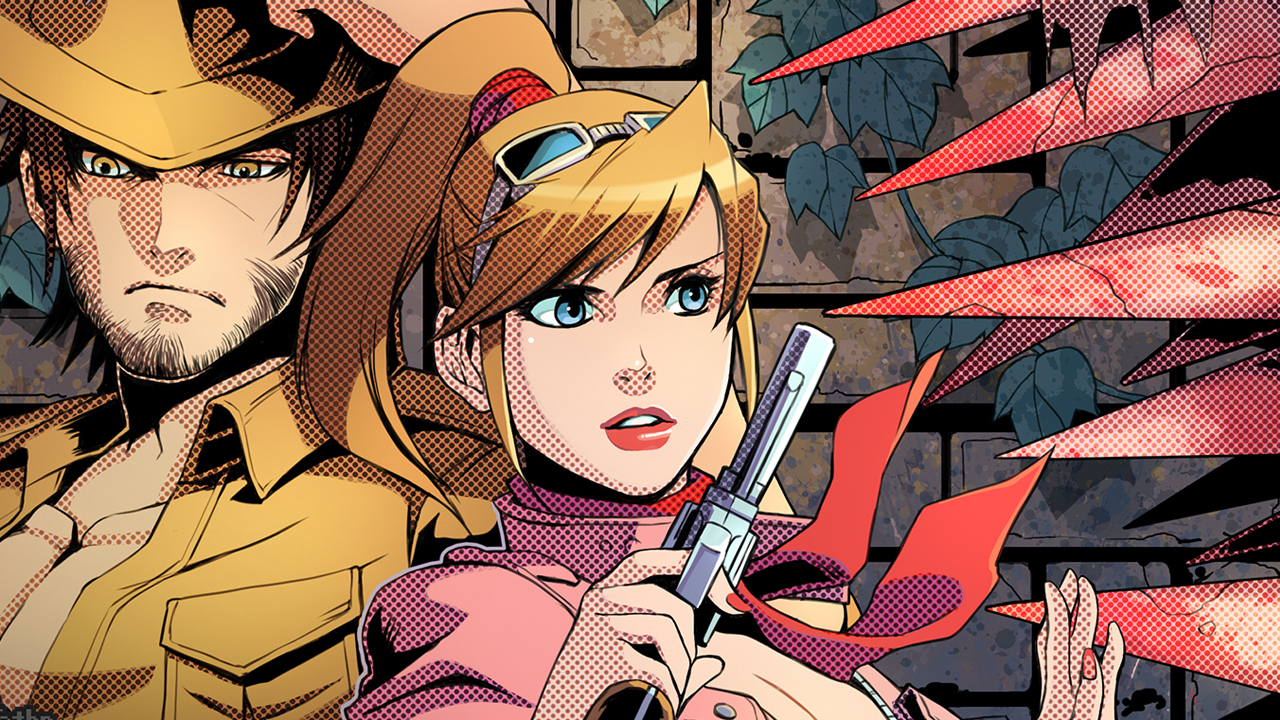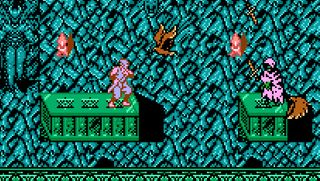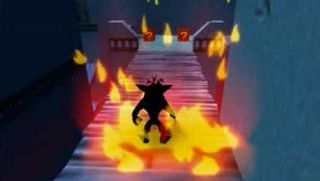Obstacles that could only kill you in a video game

It makes sense that game protagonists typically don't die of natural causes. Croaking from old age would be awfully boring in terms of gameplay (Metal Gear Solid 3 notwithstanding), so levels are often designed to be riddled with fatal obstacles you need to avoid or overcome. Plummeting into a pit of lava, falling off a tall building, getting eaten alive by an alligator: all totally valid and reasonable causes of death. But in their zealous need to pack the world full of life-depleting, game-over-inducing hazards, some games go a bit overboard. From 2D classics to 3D contemporaries, plenty of games feature killer obstacles that really don't make sense when you stop to think about it (while you patiently wait to continue). The following 'death traps' would never qualify as such in the real world, yet they constantly spell the end of our courageous game heroes. Maybe they're a bit more fragile than we thought.
The backs of enemies

Some animals have built-in defenses that should scare away predators. Porcupines, stingrays, poison dart frogs - you're going to have a bad time if you bump into their behinds, courtesy of all those handy evolutionary adaptations. But a Kremling, Space Pirate, or Koopa Troopa? Come on. Unless their butts are super-heated, electrified, or coated in a toxin that kills on contact, merely grazing their backsides should never result in death.
It's bad enough that simply touching an enemy can kill you, but when said enemy is facing away from you, that's just shameful. It would be like giving a mugger your wallet when he's got his back turned to you and is also unaware of your existence. And how come these video game heroes don't keel over when their allies touch them? What is it about being evil that makes even the mildest degree of physical contact potentially lethal?
Birds

When pigeon flies into you in real life, the worst that can happen is you're a little grossed out and paranoid about contracting a bird flu. But in most 2D platformers, birds spell certain death. Ravens, hawks, eagles, chickens, whatever - these feathered menaces have a penchant for dive-bombing into you on sight, like you were wearing an outfit made of 100 percent bird seed. Even more strange is the fact that, when the bird makes contact, more than a few video game protagonists get thrown back like Muhammad Ali just gave them an uppercut to the face. The force of this impact usually results in you plummeting to your death.
Yes, it is hypothetically possible for a bird of prey to kill a person; those talons can get mighty sharp, and if they puncture your jugular vein, that's pretty much a wrap. But for that to happen, you'd have to literally stick your neck out - instead of doing anything to protect your body, like turning away from a lunging creature. If birds were as dangerous in reality as they are in games, Earth would have an exclusively avian population.
The sides of spikes

This illogical death trap has been the bane of many a platformer, yet we never seem to learn our lesson. And who could blame us? Falling on spikes is fatal because those things are sharp, and would theoretically puncture your fragile internal organs as they pierced through you. But walking into the perfectly flat, in-no-way-pointed sides of metal spikes should be completely harmless. Spontaneously dying from touching any part of a spike other than the tip would be just as impossible as pricking your finger on the side of a needle.
Yet somewhere down the line, lazy hitbox programming made it acceptable for cylindrical cones to turn deadly. Ok, Devil's advocate: let's say the triangular, 2D spikes in Super Mario Bros. were actually thin sheets of metal. In that case, those side edges could slice you up pretty good if you fell into them. Of course, the 3D Mario games swiftly disproved that theory about Bowser's design choices when they clearly depicted all spikes as conical shapes. You know what? Sonic's got it; others don't.
Sign up to the 12DOVE Newsletter
Weekly digests, tales from the communities you love, and more
Touching the bottom of the screen

If a tree falls in the woods and no one's around to hear it, does it make a sound? Similarly: If your protagonist falls off the screen and we don't see or hear any sort of indication that they suffered a fall from a fatal height, how can we truly consider them dead? There's really no telling what could be down there, anyway - maybe it's a two-foot drop onto a cushiony gymnastics mat.
Look at Mega Man. Some stages require the Blue Bomber to make blind leaps of faith, causing him to fall multiple stories - and the impact of his landing is no harsher than a child hopping up out of a chair. Yet that very same legstrong robot is seemingly doomed the millisecond he drops out of view during horizontal level progression. What, was the entire world built on stilts of skyscraper-sized height? Besides Air Man's stage, that is.
Touching water

Bubble baths. Waterparks. Splashing into a newly formed puddle after an April shower. These are but a few of the simple joys that some video game heroes will never truly know - because for many of them, dipping so much as a pinky toe into water instantly results in rigor mortis. Sure, things like clothing and armor could, in theory, weigh you down to a watery grave. But it seems like most heroes would rather drown with their clothes on than attempt any sort of self-preservation via doggy paddling or the removal of water-soaked garments.
There can be only one logical explanation. Y'know that Buddhist monk who set himself on fire as an act of protest? Maybe John Marston and Tommy Vercetti are making a similar statement, choosing to sink like stones into any body of water they encounter in protest of...the fact that they were born without gills, maybe. Oh, and if the Covenant ever discovered submarines, Master Chief would've been screwed.
Tiny patches of fire

As you might know from general life experience, it's very possible to have an encounter with fire that ends in mild discomfort or light scarring instead of instant death. Yet in video games, your hero usually bursts into flames when they set foot in fire like they were doused in gasoline. If there was a Guinness World Record for Quickest Transition from Living Being to Human-Sized Charcoal, gaming protagonists would collectively be the champs.
Maybe there's something I'm missing. Perhaps, in virtual reality, polygons and sprites have the same flammability as paper. Or, heat courses through the body in the same way electricity does in our world. I understand that a fall into molten lava would probably be one's final destination, but giving up on life after your boot brushes the flickering tips of a flame seems a little melodramatic.
Time over

Video games usually have a point to them; an objective. And it's fair to say that those objectives - the defusal of a ticking time bomb, the rescue of a kidnapped friend, saving the world from impending doom - won't wait around forever. So having a time limit does make sense, and encourages a more active, driven style of play. What a time limit shouldn't do, provided you're not the victim in a Saw movie, is cause instant death when the clock reaches zero.
Take Mario (whose games seem to commit a startling number of these cause-of-death faux pas). When his timer expires, he ups and dies with the same dramatic leap as though he were shot in the face by a Bullet Bill. Is he committing suicide because he thought he'd be 30 seconds late to save Peach? Did the mere thought of failing to adhere to a strict heroism schedule cause Mario to go into anaphylactic shock? Guess it's better to be dead than tardy.
Lucas Sullivan is the former US Managing Editor of 12DOVE. Lucas spent seven years working for GR, starting as an Associate Editor in 2012 before climbing the ranks. He left us in 2019 to pursue a career path on the other side of the fence, joining 2K Games as a Global Content Manager. Lucas doesn't get to write about games like Borderlands and Mafia anymore, but he does get to help make and market them.













